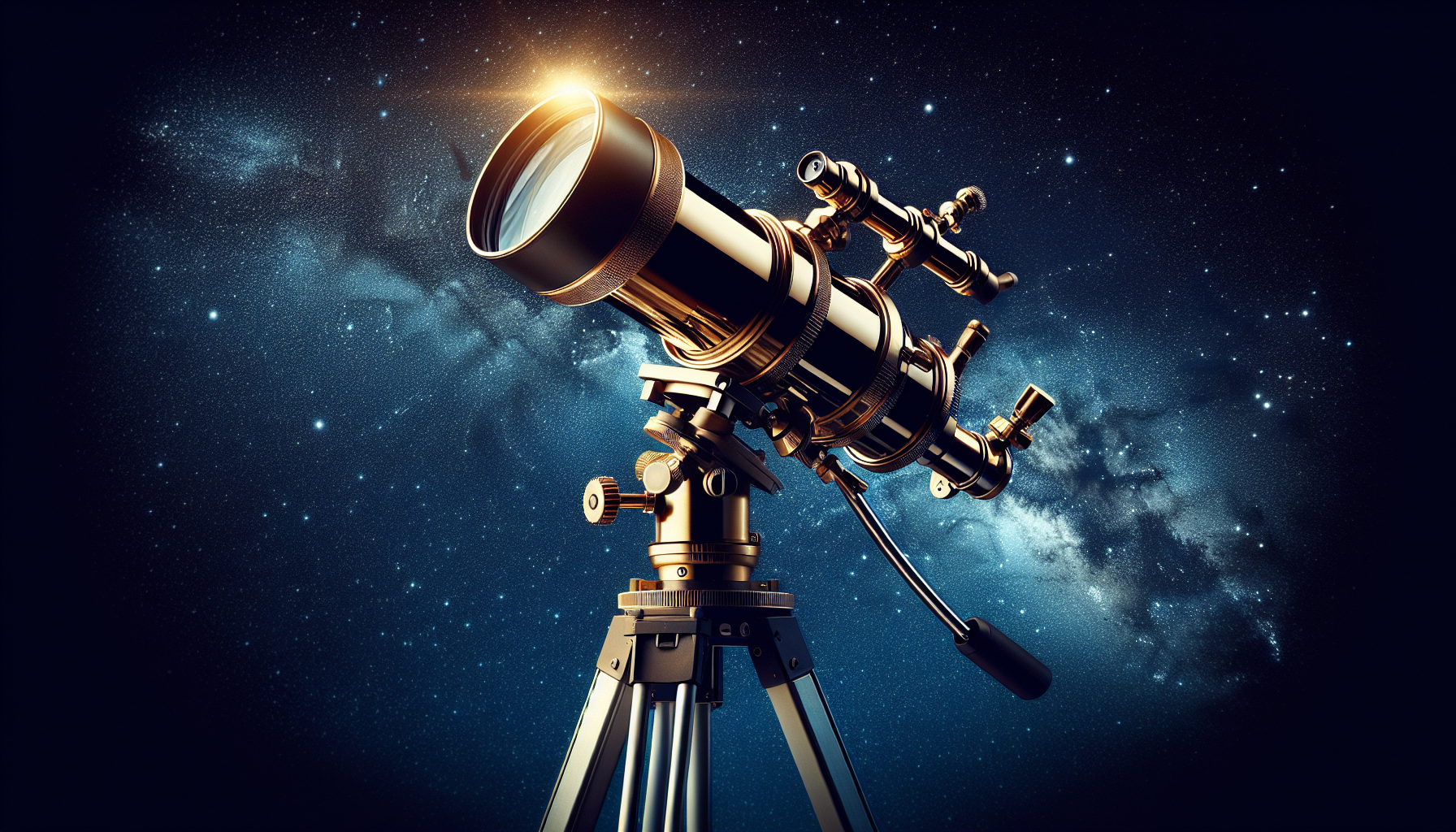Have you ever pondered the intricacies of maintaining a telescope? It’s not merely an optical instrument; it’s a gateway through which the cosmos beckons. Whether one is an amateur stargazer or a seasoned astronomer, preserving a telescope’s optimal performance is crucial for profound astronomical discoveries. Within this guide, we unravel the myriad facets of telescope maintenance, ensuring your celestial excursions remain sharp and vivid.

Table of Contents
Why is Telescope Maintenance Important?
Telescope maintenance is essential for prolonging the life and enhancing the performance of these intricate instruments. Like any precision device, a telescope is susceptible to wear and debris, which can affect its ability to capture the stars with clarity. Regular upkeep not only ensures a telescope operates smoothly but also preserves the quality of astronomical observations. Ignoring maintenance can lead to degraded optical components and inaccurate data collection, diminishing the observer’s experience.
Understanding the Basics
Before delving into maintenance procedures, it’s important to understand the fundamental components of a telescope. A typical telescope encompasses the optical tube, the mount, and various lenses and mirrors. Each of these parts requires individual attention to maintain its functionality and integrity. Awareness of these fundamental aspects allows for a structured maintenance approach, catering to each component’s specific needs.
The Optical Tube Assembly
The optical tube is the heart of the telescope. It houses the primary and secondary mirrors or lenses, which capture and focus light from distant celestial objects. Dust accumulation or moisture ingress can impede light transmission, thus degrading image quality.
Mount and Tripods
The mount forms the backbone of a telescope, providing support and facilitating precise tracking of celestial movements. Ensuring the mount operates smoothly is vital for accurate alignment and balance, crucial factors for observing moving celestial bodies.
Eyepieces
Eyepieces, the components through which observers view the magnified image, require meticulous care. Scratches or grime on these lenses can distort the view, hampering astronomical observations.

Routine Maintenance Procedures
Maintaining your telescope involves a series of routine checks and cleaning processes. These steps are designed to mitigate common issues that may arise due to environmental factors or frequent usage.
Cleaning Optics
One of the primary preventive strategies is keeping the optics clean. Use a bulb blower to gently remove loose dust particles. For more persistent debris, an optical cleaning solution combined with a soft microfiber cloth is recommended. It’s crucial not to over-clean as frequent contact can scratch the delicate coatings of lenses and mirrors.
Mechanical Checks
Regular mechanical inspections are needed to ensure the mount and other movable parts operate without friction. Lubricate the moving parts sparingly to prevent rust and enable smooth motion. Verify that screws and fasteners on the mount are secure.
Moisture Control
Moisture can be detrimental to telescopic components, leading to mold formation on lenses and rust on metal parts. Store your telescope in a dry environment and consider using silica gel packets to absorb humidity. During field use, dew shields can prevent condensation on the optical surfaces.
Advanced Maintenance Techniques
For those adept at hands-on maintenance, diving deeper into telescope upkeep can enhance performance. Understanding and applying these advanced techniques will ensure that your instrument remains in peak condition over the years.
Collimation
Collimation is the process of aligning the telescope’s mirrors and lenses to provide the best possible image. Misalignment can severely affect image clarity. Regular collimation is recommended, especially after transportation. Tools like laser collimators make the process more precise.
Mirror and Lens Re-coating
Over time, the reflective coatings on mirrors and anti-reflective coatings on lenses can wear off, reducing their efficiency. Re-coating these components is a sophisticated procedure usually performed by professionals. It restores the optical surfaces to their original reflective capacity.
Regular Software Updates
In modern telescopes with computerized components, it’s imperative to keep the software up-to-date. Manufacturers often release updates that improve tracking algorithms or address bugs, so regular checks and updates are part of holistic maintenance.

Common Issues and Troubleshooting
Understanding typical telescope problems can prevent misdiagnosis and improper handling, ultimately ensuring uninterrupted astronomical observation.
Image Distortion
Image distortion often results from poor collimation, which can be rectified by realigning the optical components. If persistent, it may indicate a fundamental issue with the optics that requires professional assessment.
Unstable Tracking
Tracking issues typically arise from an unbalanced mount. Verify that the telescope is properly counterweighed and that all moving parts are well-lubricated.
Connectivity Problems
For smart telescopes, connectivity issues with apps or remote systems can disrupt operations. Ensure that all software and firmware are updated and that there are no obstacles blocking signal reception.
Practical Application of Maintenance Techniques
Applying the knowledge from this guide ensures that enthusiasts and professionals alike maintain a high standard of observation, gaining more accurate data and prolonging the telescope’s lifespan.
DIY vs. Professional Assistance
While many maintenance tasks can be performed by amateur astronomers with the right tools and guidance, certain procedures, such as mirror re-coating or extensive repairs, should be deferred to professionals to avoid damaging sensitive equipment.
Maintenance Schedules
Establishing a regular maintenance schedule aids in the planning and execution of necessary tasks. Depending on frequency of use and environmental exposure, a biannual or annual in-depth checkup may suffice.

Exploring Varied Perspectives
The maintenance methodologies discussed are grounded in both anecdotal and empirical research, considering the varied opinions of amateur astronomers, professionals, and manufacturers. Each perspective offers insight into preferred practices and common mistakes.
Conclusion
Maintaining a telescope is integral to ensuring that it remains a reliable tool for exploring the vast universe. Through consistent care and a tailored maintenance approach, both amateurs and professionals can maximize the potential of their telescopic equipment. By following recommended practices and understanding the nuanced components of maintenance, one can ensure that each stargazing experience is as rewarding as the one before. As the cosmos continues to expand, so too does our need for diligent care of the instruments that connect us to it. What’s your interpretation of these insights? How might this guide influence your approach to telescope care?

